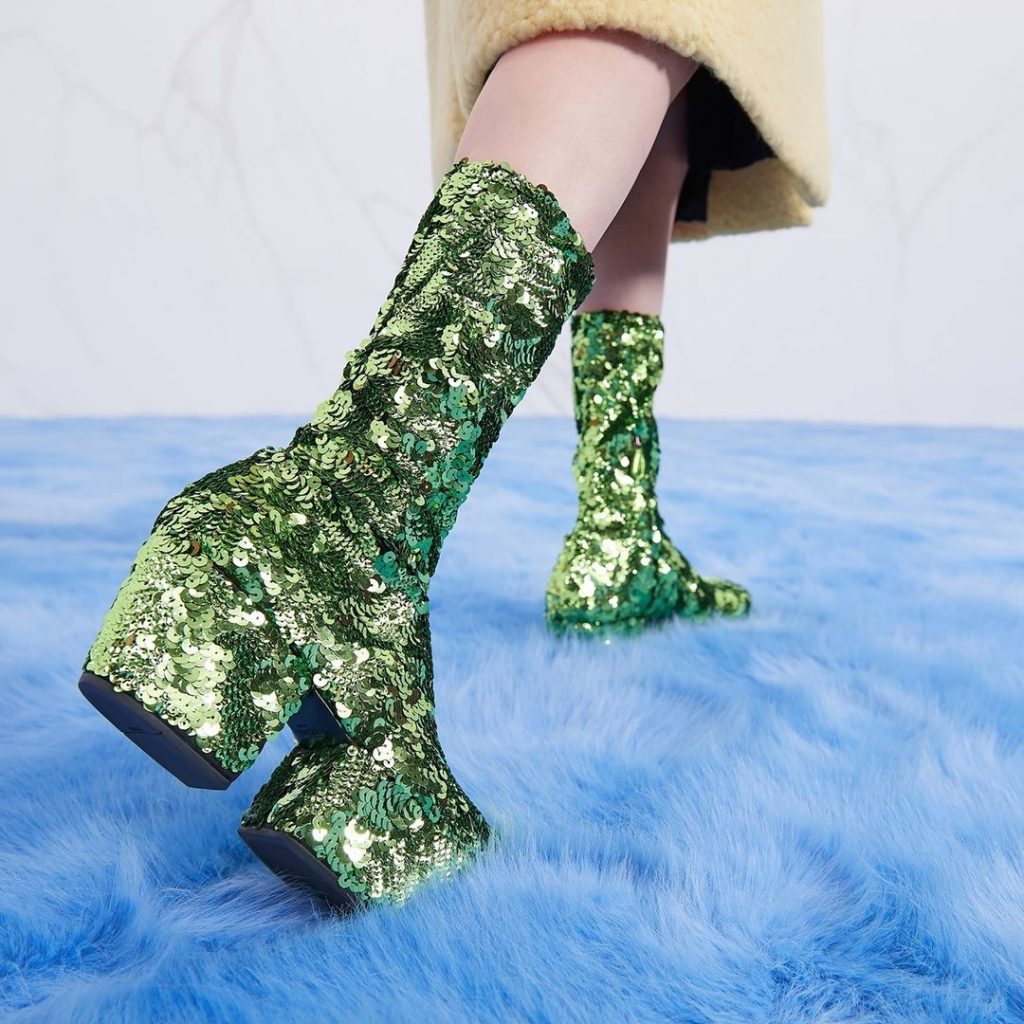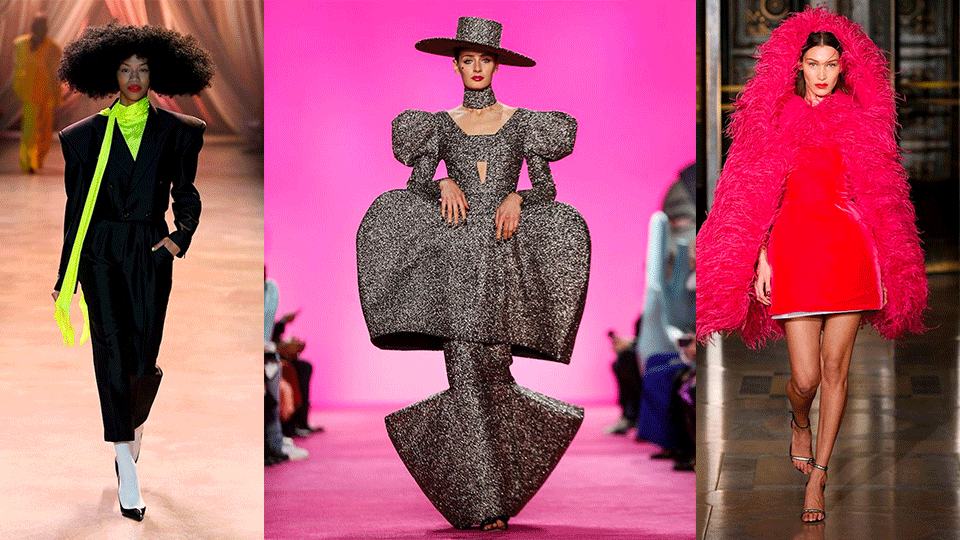- À New Wave to Fashion, À New Way of Living. Download Now on iOS Android Canada SS22
- hello@alahausse.ca
The Truth about Glitter… It’s a Microplastic

Sustainable Packaging: How to Make Fashion Retail Packaging Sustainably Chic for 2021
May 14, 2021
From Sustainable to Regenerative: The New Wave of Sustainability
May 21, 2021Is It Time To Give Up Glitter and Other Materials Causing Microplastic Pollution?

Written by: Danielle Williams
If you didn’t already know, sparkles and glitter have been all over the runway in recent seasons from Tom Ford’s sequined jumpers to the glittery designs in Chanel Cruise. Glittery boots also made multiple appearances in Yves Saint Laurent, Marc Jacobs, and Chanel (just to drop a few names). There’s no sense in denying the fact that we love sparkly things. So much so that there has actually been psychological studies behind sparkles and why we are so drawn to it. Dawn Karen, a fashion psychologist, found that humans are attracted to shiny things because of an instinctive need for water, but this doesn’t explain why we wear it just why we love it!
This trend may seem unusually over the top, but have you heard of disco? Glitter has always been a thing, it’s simply returning to retail and the runway. Brands wouldn’t be saturating their creations in glitter if there wasn’t a demand for it and there definitely is. The market statistics for this year aren’t currently available, but SVP’s Fashion Director Roopal Patel says “The Saks (Fifth Avenue) customer loves sparkle, especially on their shoes,” so we don’t see this trend fading anytime soon. Some people think of glitter, sequins, and sparkles for a celebratory outfit, and some associate it with luxury jewellery and power. There’s a sparkle for everyone, you just need to find it sustainably.

Is Glitter Really That Bad?
Other than scientists being positive that glitter is harming bodies of water, there aren’t many positives to using it. We’ve been aware of the microplastic problem on the environment for some time now, but why are they still being manufactured? Glitter is made from plastic which directly contributes to the increase in microplastics interrupting the ecosystem, primarily water systems. Plankton, fish and birds are consuming enough plastics that its toxicity is building up within them with fatal results. Most glitter products are made from polyethylene terephthalate or PET, which release toxic chemicals when broken down. If ingested, this can cause changes to human and animal hormones.
Last year a study was conducted and published in the ‘Geochemical Perspectives’ journal which found that microplastics have reached even the deepest points of the ocean in the western pacific. The only option which may relieve the future of this problem is a complete microplastic ban.
Eco-Glitter Is Not Totally Eco-Friendly
So far, science has given us two types of eco glitter. One is produced with eucalyptus trees, aluminum reflective coating, and topped off with plastic. The other alternative, mica glitter, is used mostly for cosmetic purposes. Mica are minerals which possess physical properties that allow them to be split into extremely thin pieces, and can be manipulated to mimic glitter through production processes. To our dismay, the current eco-glitter alternatives have similar effects as PET glitter! However, we have hope that as technology advances, so will biodegradable glitter options.
Other Materials Are Also Causing Microplastic Pollution
To be considered a microplastic, the micro fragment must measure 5mm in length or less. The largest contributor to this issue is the textile industry, which is responsible for 34.8% of global microplastics. Microfibres are a type of microplastic that results from the washing of synthetic clothing – such as polyester and acrylic. While being washed, these fibres shed off our clothing and disperse into the water system before making its way to sewage treatment plants. But, because these fibres are so small, they often avoid the filtration process and end up in natural water systems, like rivers and oceans.
In one wash up to 700,000 microfibres can detach from our clothing. With over 50% of our clothing being made from plastic materials, it’s estimated that between 2015 and 2025, 22 million tonnes of microplastics will make their way into the oceans as a byproduct of the fashion industry.

What Can The Fashion Industry Do To Help?
It’s time that the fashion industry became accountable for the distribution of current and future microfibres entering the water systems. If brands start to take this into consideration as early as the design and manufacturing phases, they are more likely to successfully reduce the risk of detaching fibres. Designers should consider using textiles that have been tested and proven to minimize the release of synthetic fibres. They should also ensure long-lasting durability of their merchandise to reduce landfill waste. Most importantly, they should also think about how the product can be recycled to create an eco-friendly circular production system.

Legislation against Microplastic
It’s time legal action is taken to educate fashion brands and limit the use of textiles that release microplastics. The complexity of this issue requires the inclusion of all industry sectors, not just the textile industry, to effectively implement a microplastic ban. Over the past few years, there have been multiple legislative progressions. As of February 2020, France is officially the first country to take steps in banning microplastics completely. Brune Poirson, French Secretary of State for Ecological and Inclusive Transition, is the first politician in the world to pass any law in regards to this issue. Starting January 2025, in France, all washing machines must adhere to manufacturing specifications which includes an effective filtration system that can stop synthetic fibres from entering the water systems.
What Can You Do? So Much!
If you’re passionate about this issue and want to take matters into your own hands, you can start by writing to your policymaker and encourage them to follow in France’s footsteps. You can also start by simply changing your garment washing process at home. The simplest way to do that is just wash your clothes less!
Some other washing habits to adopt include using liquid detergent, lowering machine temperatures, washing with gentle cycle settings, and if you can, using a front load washer. Another practice to consider implementing is buying a self-installed washing machine filter to more effectively catch microfibres detaching from your clothing. The CoraBall, for example, has proven to reduce fibres in water waste by an average of 26%. These are just a few options you can try at home; our blog on microfibres provides a few more tips on how you can help limit microplastics from entering our water systems.
Should Everyone Stop The Use Of Synthetic Fibres?
While the ban of synthetic fibres is the goal, we need to make sure that the material used to replace synthetics are sustainably sourced. The UK’s Environmental Audit Committee says that if an abrupt change to alternative fibers was to happen, it will put unnecessary pressures on land and water use. Given the current climate, this may not be the best option. Before a complete ban on synthetic fibres can be passed, a plan needs to be put in place so that we are not outstripping our natural resources, can maintain sustainability, while also matching consumer demand.
It’s Time For Brands To Do More And Use Less
At the end of the day, the majority of the responsibility falls on companies that produce and use materials that are the main culprits of microplastic pollution. There is still an overwhelming amount of brands in the fashion industry that aren’t taking liability for textile shedding of microplastics, but we (consumers) can start to hold brands accountable on their policies, if any, to protect the water systems from microplastics. By consciously consuming from brands that are transparent about their sustainability efforts, as consumers, we can influence brands and the market to start doing more and using less.

We at ÀLA.HAUSSE are committed to providing fashion lovers with a multifunctional ecosystem in which they can practice more sustainable consumption habits. Via ÀLA.HAUSSE‘s Multi-functional and Multi-purposeful Fashion Ecosystem- BUY/SELL/RENT/LEND/ (swap BETA 2021) mobile application, INDIVIDUALS & brands ( BETA 2021) are encouraged to REBUY, RESELL, REUSE and UP-CYCLE their personal “Clossets” aka Clothing Assets, along with overstock inventory and samples. Through this consumerism habit shift we indirectly slow down the urgency on fashion’s carbon footprint, aiding sustainability as a whole.
BETA Early Access Application Now Open for CA Fashion Lovers: Apply Now for LAST CALL
#ALAHAUSSE #WEARYOURPURPOSE #HAUSSEPEOPLE








